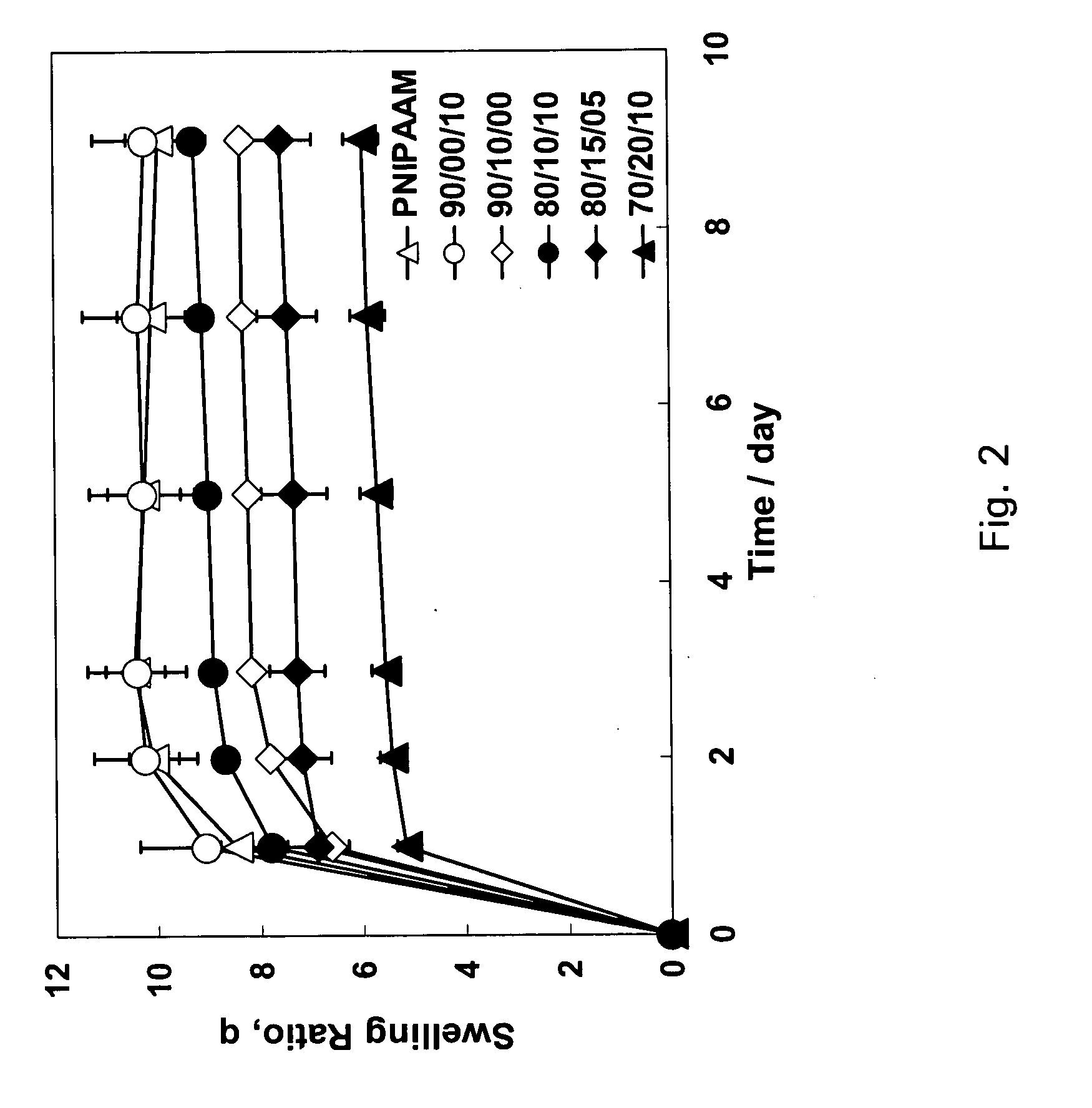Multi-functional polymeric materials and their uses
a polymer material and multi-functional technology, applied in the field of multi-functional polymeric materials, can solve the problems of affecting the use of these drugs, affecting the delivery of therapeutic agents, and affecting the quality of the product, so as to achieve the effect of precise control and prolonged delivery of therapeutic agents
- Summary
- Abstract
- Description
- Claims
- Application Information
AI Technical Summary
Benefits of technology
Problems solved by technology
Method used
Image
Examples
Embodiment Construction
[0027] The present invention stems from the discovery that certain properties of individual polymers can be combined to form materials that are smart, i.e. respond to stimuli, and biodegradable in vivo. It was discovered, after investigation and experimentation, that materials which combine a smart segment with a degradable hydrophobic and / or hydrophilic segment can be used for drug delivery and / or as a support for tissue growth. A segment is considered to be a covalently bound portion of the material and can have a plurality of polymerized units. For example, a segment can include several polymerized monomer units up to about several thousand polymerized monomer units. These segments can have any length and any molecular weight, however it is preferred that each segment has a molecular weight that is roughly large enough to approximate a desired property expected for that polymer segment. In particular, each segment can have a number or weight average molecular weight of about 100 ...
PUM
| Property | Measurement | Unit |
|---|---|---|
| concentration | aaaaa | aaaaa |
| wt % | aaaaa | aaaaa |
| temperature | aaaaa | aaaaa |
Abstract
Description
Claims
Application Information
 Login to View More
Login to View More - R&D
- Intellectual Property
- Life Sciences
- Materials
- Tech Scout
- Unparalleled Data Quality
- Higher Quality Content
- 60% Fewer Hallucinations
Browse by: Latest US Patents, China's latest patents, Technical Efficacy Thesaurus, Application Domain, Technology Topic, Popular Technical Reports.
© 2025 PatSnap. All rights reserved.Legal|Privacy policy|Modern Slavery Act Transparency Statement|Sitemap|About US| Contact US: help@patsnap.com



